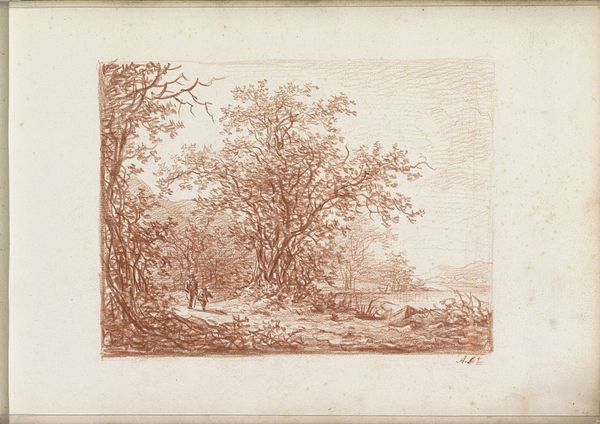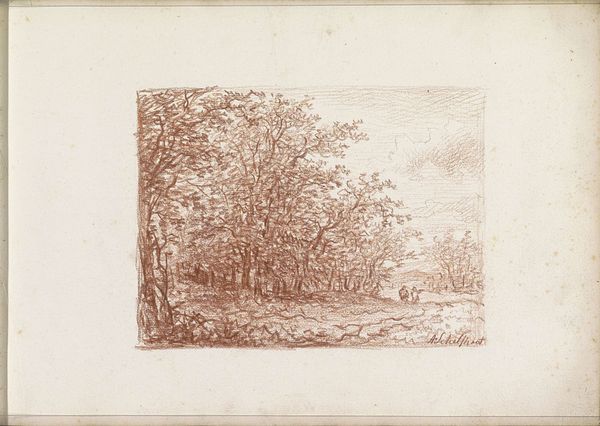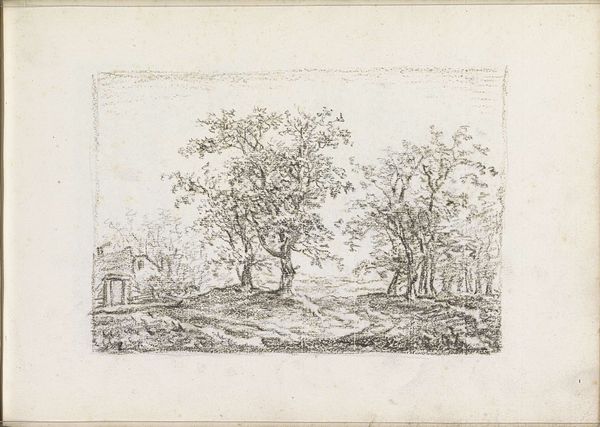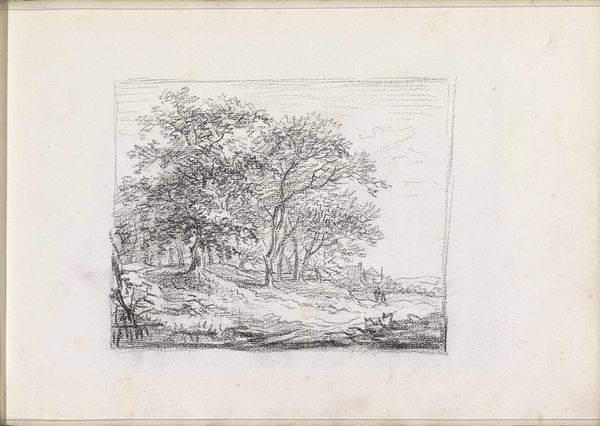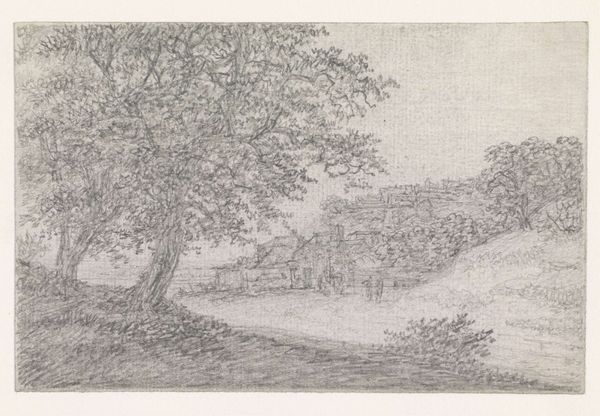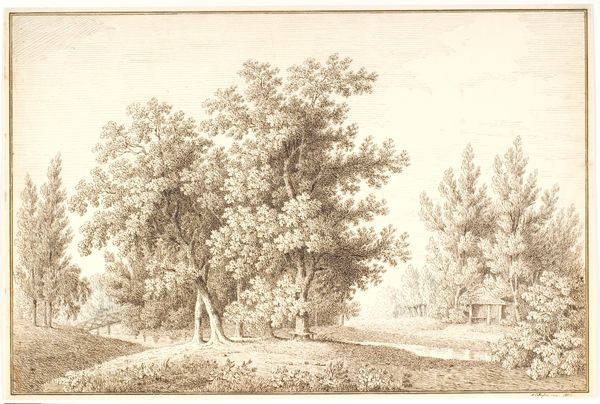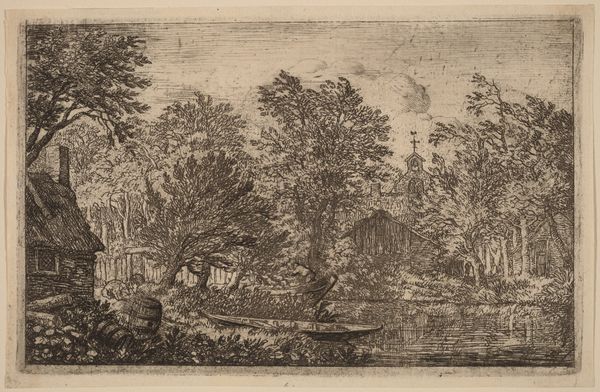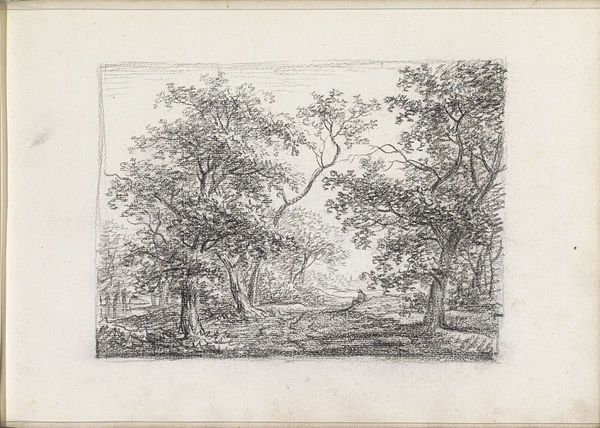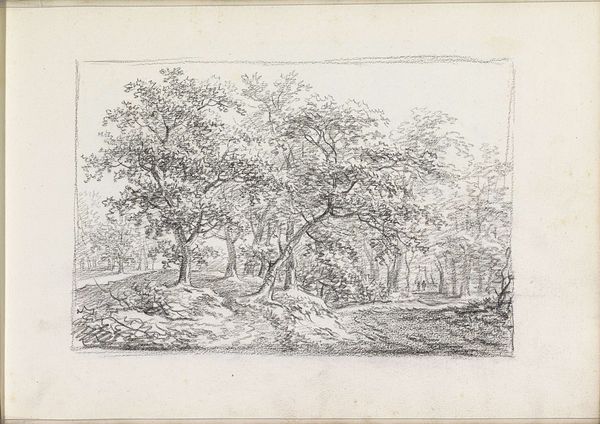
drawing, pencil
#
drawing
#
pencil sketch
#
landscape
#
etching
#
romanticism
#
pencil
Copyright: Rijks Museum: Open Domain
Andreas Schelfhout made this drawing of a man on a forest path, in the Netherlands, sometime in the first half of the 19th century. It is rendered in a warm reddish chalk. Considered within the context of the Dutch art world at the time, it reflects the values of the Hague School, which emphasized realism and the depiction of everyday life. This movement sought to capture the authentic experiences of the common person, set against the backdrop of the Dutch landscape. Schelfhout's choice to depict an anonymous figure walking through the woods embodies the values of the movement. The Rijksmuseum itself plays a role in framing our understanding, too. As a national institution, it elevates works like this, imbuing them with cultural significance. To understand this drawing more fully, one might research the history of Dutch landscape painting, the rise of national museums, and the cultural values of the Dutch Golden Age. It's through this kind of investigation that we can fully appreciate the role of the work.
Comments
No comments
Be the first to comment and join the conversation on the ultimate creative platform.
